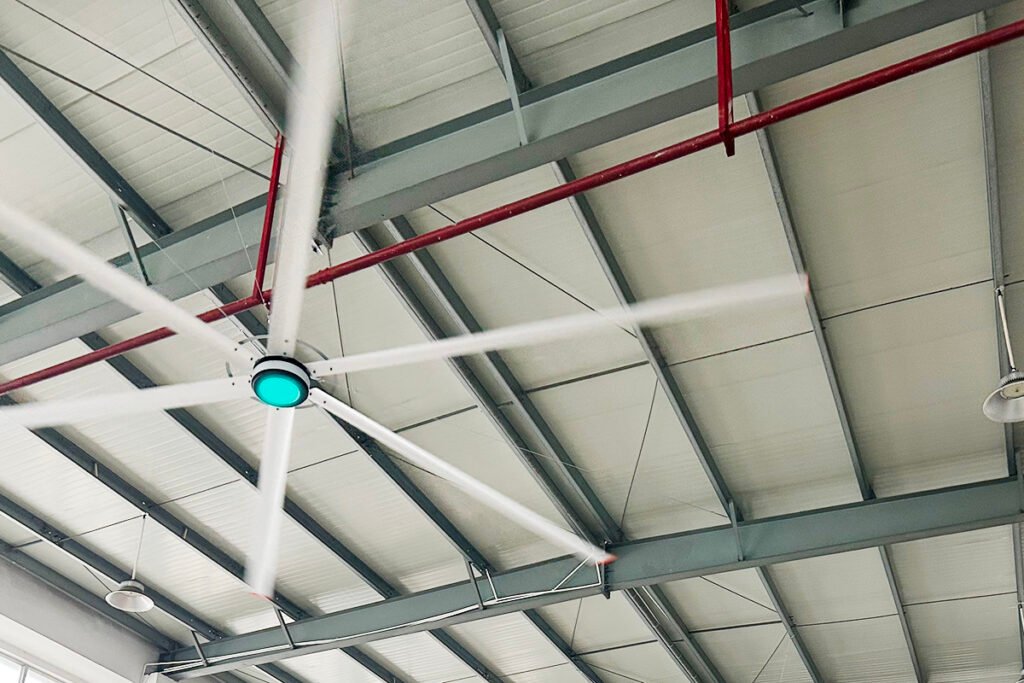
The design of HVLS (High Volume Low Speed) fan blades is crucial for ensuring high performance and optimal airflow. Here are some key points in the design of HVLS fan blades and how they can be optimized for airflow efficiency, highlighting Air21xx’s capabilities in this area:
- Blade Shape: The shape of the fan blades is vital for the airflow pattern they produce. Aerodynamic efficiency is considered to maximize lift and minimize drag.
- Number of Blades: The quantity of blades can affect the distribution and noise level of the airflow. More blades can provide smoother airflow but may increase noise and energy consumption.
- Material Selection: The choice of blade material significantly impacts weight, strength, and durability. Lightweight, high-strength materials like aluminum alloys or carbon fiber can enhance energy efficiency and extend the service life.
- Size and Balance: The size of the fan blades needs to match the motor’s power for optimal performance. Additionally, blade balance is crucial for reducing vibration and noise.
- Angle Optimization: The installation angle of the fan blades affects the direction and speed of the airflow. Optimizing the angle can improve the efficiency and coverage of air movement.
- Airflow Simulation: Computational Fluid Dynamics (CFD) software is used for airflow simulation, helping designers predict and improve the fan’s airflow characteristics.
- Noise Control: Measures to reduce noise, such as optimizing blade shape and mounting methods, as well as using noise reduction materials, are taken into account during the design process.
- Safety: Blade design must adhere to safety standards, including the use of guards to prevent contact with moving parts and ensuring the blades will not detach during operation.
- Energy Efficiency: The design should consider the fan’s energy efficiency ratio, ensuring the lowest possible energy consumption while providing the required airflow.
- Maintenance Accessibility: Blade design should facilitate easy cleaning and maintenance to reduce maintenance costs and ensure reliable long-term operation.
- Environmental Adaptability: Blade design should accommodate various working environments, such as indoor and outdoor settings, and climates that are hot and humid or dry.
By taking a comprehensive approach to these design considerations, HVLS fans can provide efficient airflow, optimize temperature and air quality within a space, and reduce energy consumption while enhancing user comfort. Air21xx, with its commitment to innovation and customer-centric design philosophy, stands out for its expertise in creating HVLS fan blades that are not only efficient and reliable but also safe and adaptable to a variety of environments.
